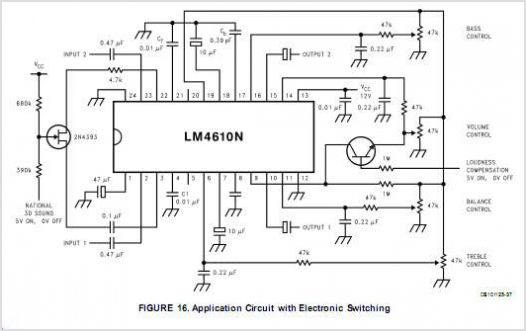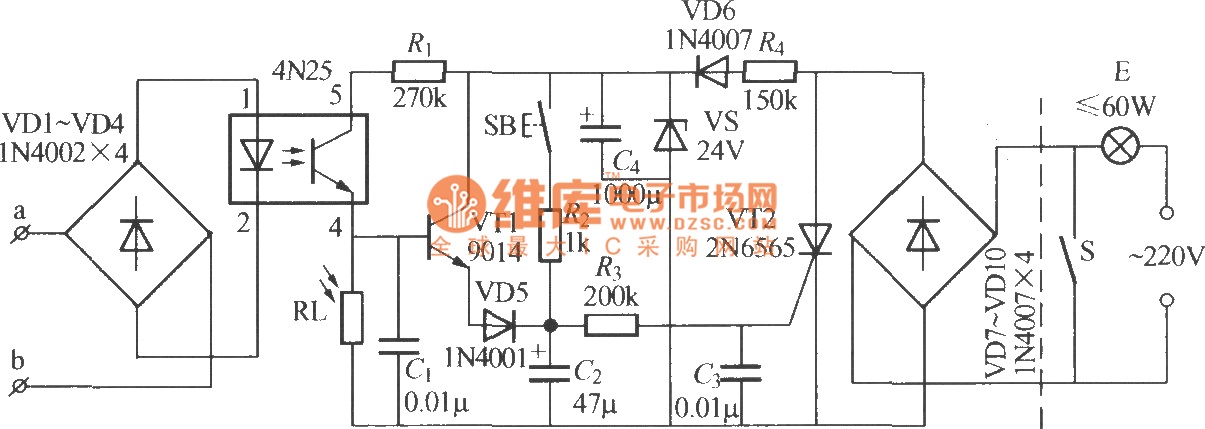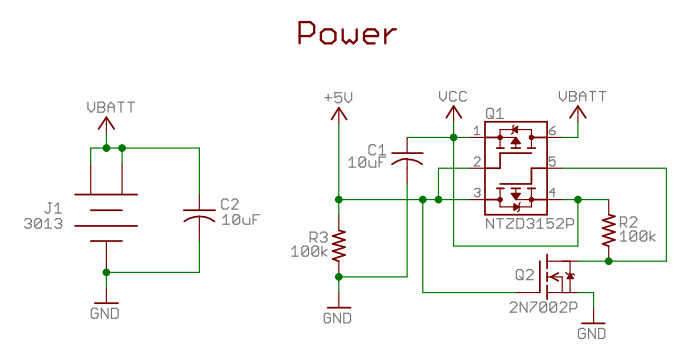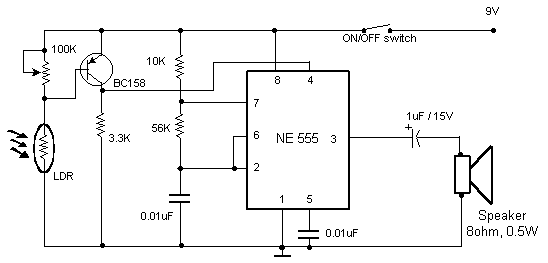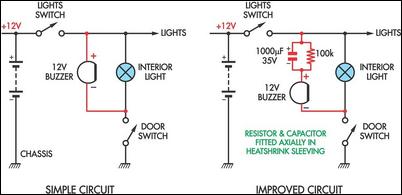
Capacitance operated battery powered light
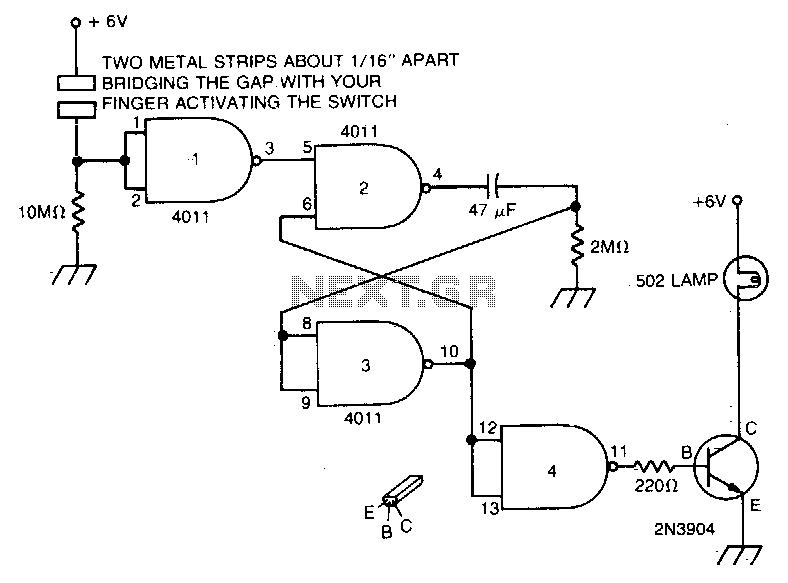
Touch the plate, and the light will turn on and remain on due to the 47 µF capacitor and the 2MΩ resistor for a duration determined by the timing resistor.
The circuit described involves a touch-sensitive plate that activates a light source when engaged. The primary components of this circuit include a 47 µF capacitor and a 2MΩ resistor, which work together to control the duration for which the light remains illuminated after the plate is touched.
When the plate is touched, it allows current to flow through the circuit, charging the 47 µF capacitor. The charge stored in the capacitor is released gradually, which keeps the light on for a specific period. The time for which the light remains on is primarily determined by the resistor value, which in this case is set at 2MΩ. The time constant (τ) for the RC circuit can be calculated using the formula τ = R × C, where R is the resistance in ohms and C is the capacitance in farads. For this circuit, τ equals 2,000,000 ohms multiplied by 47 × 10^-6 farads, resulting in a time constant of approximately 94 seconds.
This means that after the initial touch, the light will stay illuminated for about 94 seconds before gradually turning off as the capacitor discharges through the resistor. The design can be utilized in various applications, such as in touch-sensitive lamps or indicators, where a brief touch activates a visual signal for a predetermined duration. Adjustments to the resistor value can modify the time the light remains on, providing flexibility in the circuit's application. Additional components, such as a transistor or an integrated circuit, could be incorporated to enhance functionality or control in more complex implementations.Touch the plate and the light will go on and constant of the 47 µf capacitor and the 2M remain on for a time determined by the time resistor.
The circuit described involves a touch-sensitive plate that activates a light source when engaged. The primary components of this circuit include a 47 µF capacitor and a 2MΩ resistor, which work together to control the duration for which the light remains illuminated after the plate is touched.
When the plate is touched, it allows current to flow through the circuit, charging the 47 µF capacitor. The charge stored in the capacitor is released gradually, which keeps the light on for a specific period. The time for which the light remains on is primarily determined by the resistor value, which in this case is set at 2MΩ. The time constant (τ) for the RC circuit can be calculated using the formula τ = R × C, where R is the resistance in ohms and C is the capacitance in farads. For this circuit, τ equals 2,000,000 ohms multiplied by 47 × 10^-6 farads, resulting in a time constant of approximately 94 seconds.
This means that after the initial touch, the light will stay illuminated for about 94 seconds before gradually turning off as the capacitor discharges through the resistor. The design can be utilized in various applications, such as in touch-sensitive lamps or indicators, where a brief touch activates a visual signal for a predetermined duration. Adjustments to the resistor value can modify the time the light remains on, providing flexibility in the circuit's application. Additional components, such as a transistor or an integrated circuit, could be incorporated to enhance functionality or control in more complex implementations.Touch the plate and the light will go on and constant of the 47 µf capacitor and the 2M remain on for a time determined by the time resistor.
